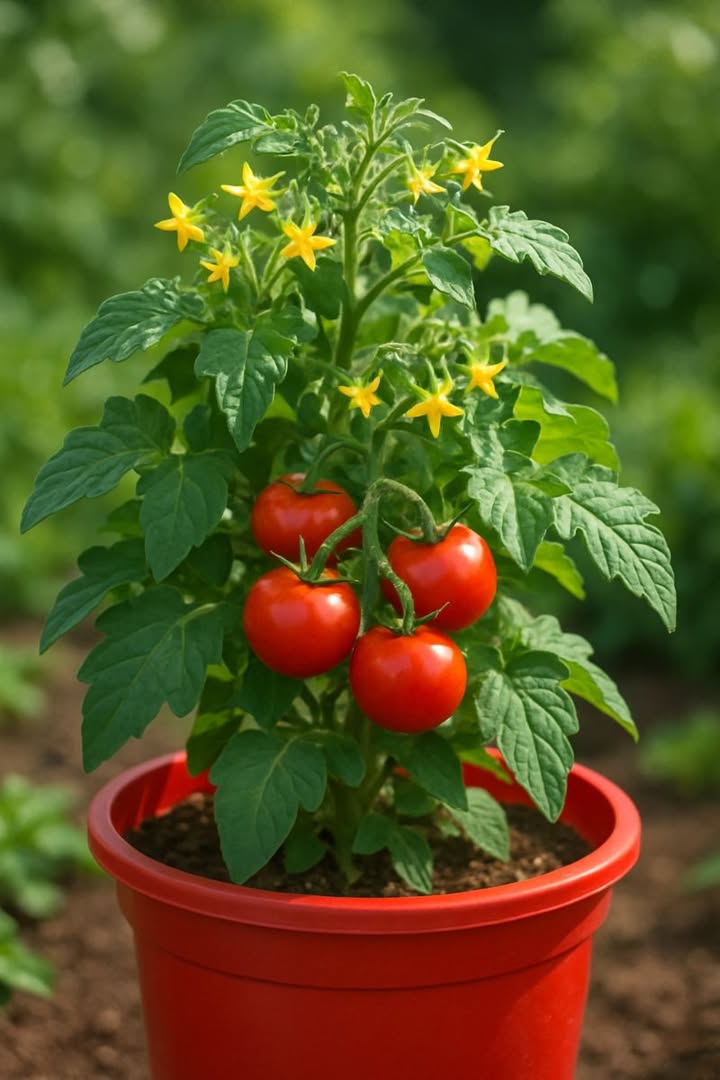5. Position for Optimal Sunlight
Tomatoes require full sun to thrive, which means they need at least 6 to 8 hours of direct sunlight each day. Position your containers in a location that receives ample sunlight, such as a south-facing balcony or patio.
If you live in a particularly hot climate, consider providing some afternoon shade to prevent the plants from overheating. You can use shade cloth or move the containers to a slightly shaded area during the hottest part of the day.
6. Water Consistently and Correctly
Consistent watering is key to healthy tomato plants. Containers dry out more quickly than garden beds, so you may need to water daily, especially during hot weather. Water deeply until it runs out of the drainage holes to ensure the entire root system is hydrated.
Avoid overhead watering, which can promote fungal diseases. Instead, water at the base of the plant or use a drip irrigation system to deliver moisture directly to the roots.
7. Fertilize Regularly with Balanced Nutrients
Tomatoes are heavy feeders, so regular fertilization is necessary for optimal growth. Use a balanced fertilizer with equal parts nitrogen, phosphorus, and potassium, such as a 10-10-10 formula. Apply the fertilizer every 4 to 6 weeks, following the manufacturer’s instructions.
In addition to regular fertilization, consider using a liquid seaweed or fish emulsion feed every two weeks to provide trace minerals and promote healthy foliage and fruit development.
8. Support Your Tomato Plants with Stakes or Cages
Even compact tomato varieties benefit from support to keep the plants upright and prevent damage to the stems and fruit. Use stakes or tomato cages to provide the necessary support. For determinate varieties, a simple stake or small cage will suffice.
For indeterminate varieties, use a sturdy cage or a combination of stakes and twine to support the taller growth. Secure the main stem to the support structure with soft ties to avoid damaging the plant.
9. Prune and Pinch for Better Growth
Pruning is an important practice to encourage healthy growth and increase fruit production. Remove the suckers, which are the small shoots that grow in the leaf axils, to direct the plant’s energy towards fruiting rather than foliage.
For indeterminate varieties, consider removing the lower leaves as the plant grows to improve air circulation and reduce the risk of disease. Be careful not to over-prune, as some foliage is necessary for photosynthesis and overall plant health.
10. Monitor for Pests and Diseases
Regularly inspect your tomato plants for signs of pests and diseases. Common pests include aphids, whiteflies, and tomato hornworms, which can be controlled with insecticidal soap or neem oil.
Fungal diseases like blight and powdery mildew can be prevented by ensuring good air circulation and avoiding overhead watering. If you notice any signs of disease, remove affected leaves immediately and consider using a fungicide if necessary.
11. Rotate and Refresh Soil Annually
To prevent soil-borne diseases and nutrient depletion, it’s important to rotate your crops and refresh the soil each year. If possible, avoid planting tomatoes in the same container year after year.
At the end of the growing season, remove the old soil and replace it with fresh potting mix. This practice helps maintain soil fertility and reduces the risk of disease, ensuring your tomatoes have the best possible start each season.
ADVERTISEMENT

